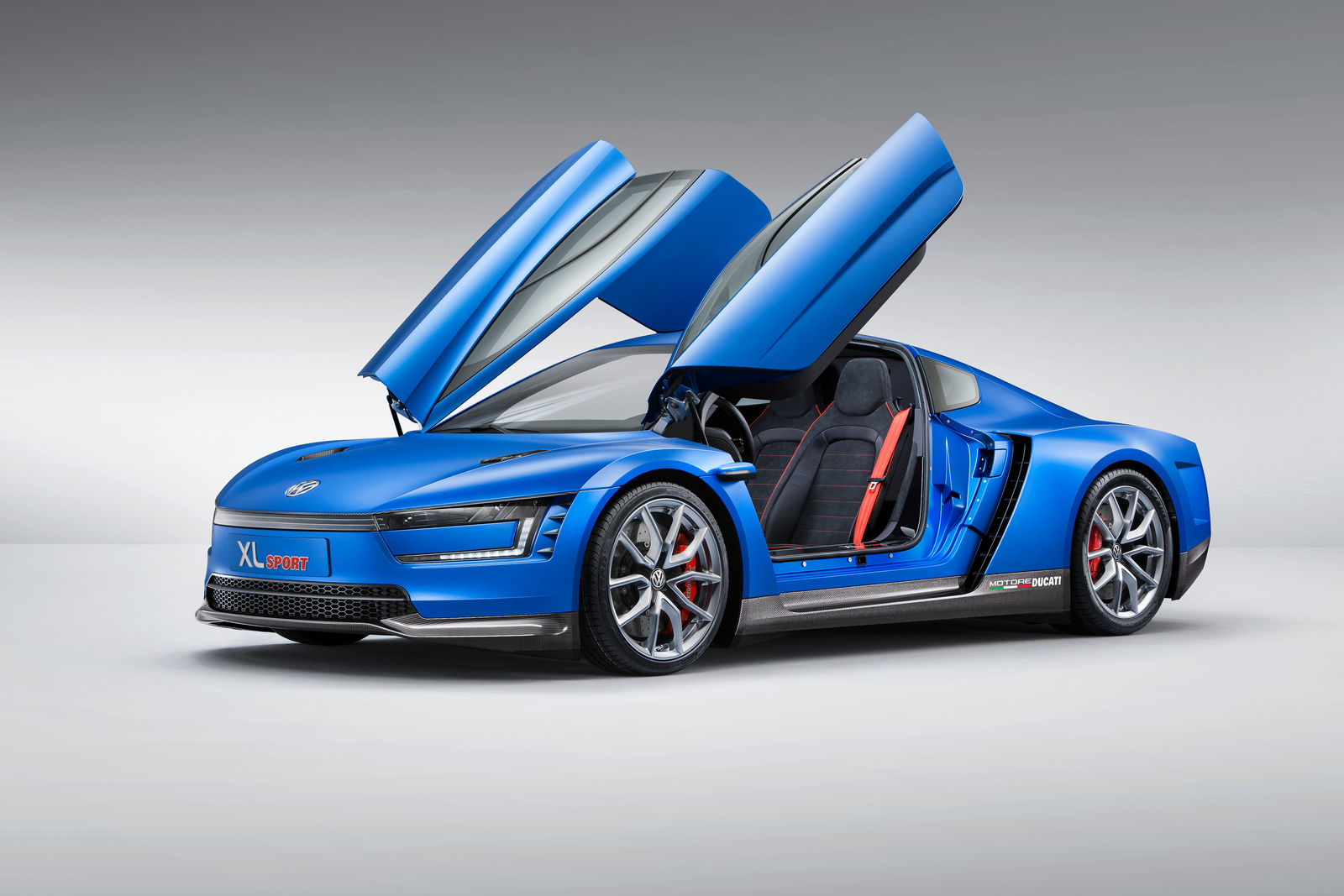

The XL Sport is a sister model of the XL1. Both share the same basic design. The main element they have in common is the body, many parts of which are manufactured in carbon-reinforced polymer (CFRP), with a monocoque featuring slightly offset seats for the driver and passenger. Here, Volkswagen prefers CFRP components manufactured using the RTM process (Resin Transfer Moulding). The density of this material or its specific gravity is just 20% that of a comparable steel exterior skin, yet it is just as rigid and strong. Wing doors that swing forwards. The wing doors of the XL1 and XL Sport are reminiscent of those of a high-end sports car. They are hinged at two points: low on the A-pillars and just above the windscreen in the roof frame, so they do not just swivel upwards, but slightly forwards as well. The doors also extend far into the roof. When they are opened, they create an exceptionally large amount of entry and exit space. The door windows are made of polycarbonate. The upper part of the windows is firmly attached to the exterior door skin due to the specifications of lightweight design, while a segment of the lower area of the side windows can be opened. The windscreen of both models is manufactured from a special type of thin glass. Dimensions and Design Compelling proportions. Despite sharing ground with the X1 in terms of its underlying design, the XL Sport has a look of its own. The reason for this is that whereas the XL1 was designed for uncompromising fuel efficiency, the design brief of the XL Sport took this a step further with the inclusion of uncompromising driving dynamics. The special requirements regarding the downforce values of a 270 km/h car and the parameters of the drive technology led to the XL Sport being longer and wider than the XL1. Dimensions in detail: The XL Sport showcased in Paris is 4,291 mm long (XL1: 3,888 mm), 1,847 mm wide (XL1: 1,664 mm), 1,152 mm high (XL1: 1,153 mm).